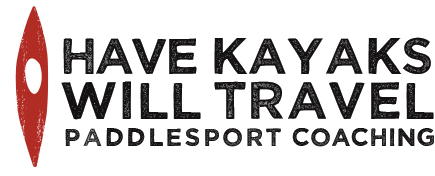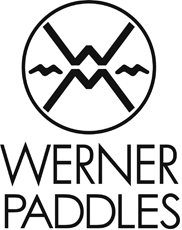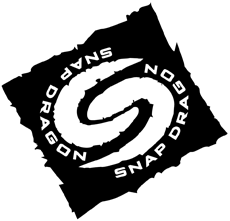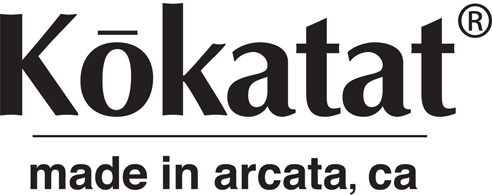We just returned from MEC Paddlefest Toronto, an intense weekend celebration of canoeing, kayaking, stand up paddle boarding and other human-powered craft. It’s hard to wrap your mind around all that goes on over the course of this two-day event. There are clinics on strokes, rolling, rescues and fitness; booths promoting manufacturers, trips, clubs and causes; boats and gear to demo or buy; and land classes on navigation, weather and boat repair. Boats, paddles, spray skirts and PFDs are provided, and it’s all hands-on and helpful. Participants can take four 90-minute, on-water clinics per day (here, Birgit Kuhle teaches a student to roll)… …paddle demo boats (here, Liz Burnside, who organized the first MEC Toronto Paddlefest in 2005 and continues to put her all into it, answers questions about the P&H Cetus)… …and even learn how to fix a damaged hull. Here, Roch Prevost, sales and marketing manager of Nova Craft Canoe, demonstrates boat repair techniques. For participants, it’s a fantastic deal. Courses cost $5 to $10 apiece, and there are lots of freebies (water bottles, Clif Bars, Larabars). The only way to measure attendance is in blue wristbands (which signify that participants have signed a liability waiver). This year, more than 1,500 wrist bands were dispensed. For us, it’s an opportunity for cross-pollination of coaching ideas with colleagues in Paddle Canada. After a day of teaching, we spend the evenings talking shop with Erik Ogaard of Harbourfront Kayak and Canoe School, Michael Pardy of SKILS, Kelly Blades of P&H (not from Canada, but a fixture at this fest), David Johnston of Paddlinginstructor.com, and a host of other top-notch instructors from all over Canada. Erik Ogaard leads a paddling fitness class. Dympna Hayes of Learntokayak.ca and Michael Pardy of SKILS evaluate strokes during a video analysis class. David Johnston teaches a weather class. Kelly Blades keeps it light. But it’s more than that. It’s also a chance to work with an extraordinarily diverse groups of students. The range of ages and ethnicities at MEC Toronto Paddlefest is greater than at any other symposium where we’ve taught, and their determination and enthusiasm are inspiring. A dragonboat departs from the beach. Even the tiniest paddlers could demo boats that fit. The range of participants is remarkable. At the start of class, many students are wobbly and uncertain; by the end they are sitting up straight and empowered. Whether they’ve learned to edge, made progress on a roll, figured out how to rescue a capsized paddler, or discovered how much they love to paddle, they are elated and appreciative. For a coach, that’s the ultimate reward. Success! The MEC staff members are everywhere, registering students for classes, answering questions, locating needed gear, moving...
How to improve your sea kayak rescue skills
Alec prepares to do a reenter and roll. Early summer seems to be rescue season. Kayak clubs schedule rescue sessions, symposia offer rescue classes, and many paddlers take advantage of the now-warm-enough water to practice a few self- and assisted rescues. All of which is great; being able to get yourself and your buddies back in their boats is essential for safe paddling. But over the years, we’ve observed plenty of well-meaning instructors teach techniques that are not efficient, effective or particularly safe. Troubled by this, we wrote stories for both Adventure Kayak and Sea Kayaker magazines on the T-rescue (the go-to assisted rescue) in which we explained current best practices. An image from our Sea Kayaker story, demonstrating how a victim can move safely from his boat to the rescuer’s. Some of the poor T-rescue techniques we we’ve seen include: Sending the victim to the stern of his boat. Failing to ask the victim to flip his own boat. Lifting the capsized boat in order to empty it. Allowing the victim to swim from boat to boat. Letting go of the victim’s boat during the rescue. Placing the victim on the bow or stern of the rescuer’s boat. Failing to hold on tightly as the victim reenters his boat. Each of these errors slows the rescue, increases the likelihood of injury, and diminishes the chances of success in all conditions. We distilled the essentials of the T-rescue into a few key elements: Encourage the victim to flip his boat. Have the victim transfer to the rescuer’s boat, maintaining contact by holding deck lines. Keep the victim in front of or behind the rescuer’s cockpit during the rescue. Roll the victim’s boat over and then edge away to empty it. Hold tight on both sides of the victim’s boat and lean on his deck as he reenters it. If the rescuer edges away from the victim’s boat, she can empty it without straining her back or shoulders. Most of the time, we see people teach and practice rescues on flat water. That’s a good place to start, but it’s essential to work on rescues on rough water, too. And in fact, plenty of techniques that work on flat water will fail in rougher conditions, which is where we are most likely to need them. Shawna Franklin and Leon Somme of Body Boat Blade International recently released a Sea Kayak Rescues DVD that covers assisted and self-rescues in flat, dynamic and rough water. There’s no better way to demonstrate the importance of good technique than to see how well it works in a coastal environment with ocean current, breaking waves and rocky shorelines. This instructional DVD does exactly that, showing how to quickly and safely...
Taking advantage of all the lake offers
This is the season of changeable weather. And Lake Michigan is highly responsive to those changes. One day it feels like fall, with strong winds out of the north, big waves, abandoned beaches and a chill in the air; the next it feels like summer, with warm breezes, gentle waves, motorboats zooming and the beaches full of bathers. Yesterday we had the beach to ourselves. And the water, too. Today we worked on rescues with our friend Bonnie. And paddled past skyscrapers, sailors, motor boaters and beach volley ball players. It would be easy to favor one type of day or the other, but we love both. On rough-water days, we can surf waves and play in clapotis. On calmer days, we can practice rescues and paddle some distance. Both prepare us for the real range of situations we encounter over time, and both are...
The pleasures of a Level 4 class
It’s not often that we get to coach higher-level classes. In the great pyramid of kayak lessons, beginners form the base. Comparatively few people seek out instruction after they’re solid intermediates.* So it was a pleasure for Sharon to spend Memorial Day weekend teaching a Level 4 Open Water Kayak Training for Geneva Kayak Center with Scott Fairty, one of our coaching mentors. Designed to help participants work on the skills they’ll need for an American Canoe Association Level 4 coastal skills assessment or a British Canoe Union four-star sea leader assessment, this course simulates tidal features by using the Menominee River in Wisconsin and then chases exciting conditions on Lake Michigan and Lake Superior for wind, waves and surf. The large-volume Menominee River provides current and class I and II rapids–perfect for working on eddy turns, peel-outs, attainments and ferry glides. The Menominee is one venue that allows midwestern paddlers to develop skills needed for paddling in ocean currents. In addition to moving water, it offers eddies, overfalls and other ocean-like features. It demands precise maneuvers of paddlers who wish to avoid getting washed downstream and hung up on rocks. We spent the first day on the skills necessary to successfully enter and leave eddies, ferry across the river and attain upstream. Storm coming in. Load the boats and head for the water! Then, as predicted, the sky clouded over, the wind picked up, and the temperature dropped. The weather was custom-made for a Level 4 course in the Apostle Islands, so we loaded up and drove to Lake Superior, where the forecast for the next day was winds of 15 to 25 knots out of the northeast and waves of 5 to 7 feet. Near shore, the waves were far smaller, allowing for some practice launching and maneuvering in conditions. We paddled out to Sand Island, beloved for its sea caves, where we had lunch in the refuge behind a park service building. Lunch the the lee of a park service building. Then we set out in search of larger waves, which we found slightly further along the shore. We paddled out into 5- to 7-foot waves with the wind howling in our ears, then turned around and paddled back with the wind and waves behind us. These are serious white-knuckle paddling conditions for intermediate paddlers; these participants impressed us with their mental and physical fortitude. They’re also challenging conditions for navigation and course plotting because the wind figures into the calculation. We practiced various ways of accounting for the push of the wind, and ended the day exploring the power of the waves along the shoreline. We debriefed over pizza (“Serves five? We’ll take two of...
Rescue Me! Thursdays offer free training
Tom Lindblade (far left) and Scott Fairty (second from left) with some of the participants in a recent Rescue Me! Thursday. This is year two of Rescue Me! Thursdays, an initiative of the Illinois Paddling Council. These weekly training sessions were initially created in order to train the Paddlers Patrol, another IPC initiative–a volunteer group that provides safety boaters for local events, such as the Flatwater Classic, the Illinois Paddlesports Festival and the New Year’s Day Paddle. The concept is simple and smart: Take advantage of the Marge Cline Whitewater Park in Yorkville, IL and the expertise of Ryan Rushton and Scott Fairty of Geneva Kayak Center (located on the course) to offer weekly training sessions on basic swiftwater rescue. The brains behind this belong to Tom Lindblade, president of the IPC, who has been an experiential educator and canoe instructor for more than four decades and was recognized three years ago with an “Excellence in Instruction” award by the American Canoe Association. Tom Lindblade, mentor to two generations of paddlesport instructors and president of the Illinois Paddling Council. We had the good fortune to be present for this past week’s session on wading rescues. This was the fourth in this year’s series, following cold-water rescues, rescue ropes, and boat-over-boat rescues. Lindblade teaches most of the classes, with help from Scott Fairty. Towing, bumping and unpinning boats will follow in the coming weeks. The group wades into the river, using paddles for support. “Imagine if someone who was rescue-trained had been there when those three men died in the dam,” Lindblade says, referring to the tragic incident in 2006 that led, years later, to the demolition of the deadly Glen D. Palmer Dam and the creation of the whitewater course in Yorkville. “That kind of thing can happen any time, and now we’ve got whitewater in the area, so these skills become more necessary.” Scott Fairty (green helmet) takes six participants safely out into the current. Attendance has been good: between 9 and 17 people per week. The training is free (though non-ACA members must pay $5 for insurance when they sign the liability waiver) and no reservations are required. Just show up at the whitewater park at 6 p.m. on Thursdays in May, and you’re part of the class. Alec simulates a pin on a rock. “This is one of the most important things we can do,” Lindblade...
Dynamic Trio? A study in green
During our recent Instructor Certification Exam, we had the opportunity to try out several boats we hadn’t paddled before, including the Jackson Fun Runner and the Jackson Dynamic Duo. For a moment, it appeared that we had created a Dynamic Trio. Jim Tibensky, Scott Fairty and Alec...
No need for solid paddling and rolling skills!
All that training was for naught.
River Kayak IDW/ICE — done!
Have Kayaks, Will Travel: whitewater edition. The first kayak class we took was offered by the Chicago Whitewater Association (CWA) at our local YMCA. A group of dedicated paddlers taught us to roll and paddle in the pool and on local rivers. But we soon discovered sea kayaking, and nearly all of our paddling time and effort was focused on longer boats and larger bodies of water. We still assisted at the pool class we previously took, and we eventually took over as lead instructors. But our hearts belonged to open water. And so did our certifications. Then Geneva Kayak Center moved to the Marge Cline Whitewater Course in Yorkville, IL, and our interest in river paddling was rekindled. We spent considerable time playing on the quarter-mile course, took an Instructor Development Workshop with Kent Ford, traveled to Wisconsin to paddle rivers with the other staff at Geneva Kayak Center, and finally enrolled in an IDW/ICE (Instructor Development Workshop/ Instructor Certification Exam) with Instructor Trainer Educator (ITE) David Su and Instructor Trainer (IT) candidate Scott Fairty this past week. Scott Fairty (left) and David Su (right) conferring before the start of our IDW/ICE. We expected the process to be intense. The combination of training and assessing is meant to be challenging, both mentally and physically. And it was. The IDW began with a trip on the Vermillion River in Illinois. Here, instructor candidate Jim Tibensky leads a session on ferrying. David Su scouts Wildcat, the much loved drop on the Vermillion… …and then runs it. During an IDW/ICE, candidates are typically required to demonstrate paddling and rescue skills, effective coaching techniques, and knowledge about the type of paddling in which they are seeking certification. Alec conducts a spontaneous parking lot forward stroke lesson. David Su and Greg Anderson demonstrate a method for emphasizing torso rotation and shoulder protection during a sweep stroke. They also benefit from demonstrations by the ITE and/or IT about how to teach various skills. Sharon plays the part of a student as David demonstrates wet exit instruction. Different craft, different paddle, but many of the same techniques: We worked on canoe skills, too. Then we got an inch of rain in a 24-hour period and the Vermillion, which had been running at 1,100 CFS swelled to 11,000 CFS. When it dropped back to a healthy 5,500 CFS, we took the opportunity to run it again, this time with pushier water and some more challenging features. Greg surfs the top wave near the put-in. Sharon runs Wildcat on river left at the higher level. On flatter sections between features, David introduced us to an activity he uses in the pool: the “air loop”–a flip over another paddler’s...
Sea kayak instruction in motion
I’ve been pondering the idea of coaching on a journey for a few years, and so it was a pleasure to put this into practice on a recent “destination course” I was able to assist with circumnavigating Cumberland Island, Georgia, for the Geneva Kayak Center. Our group met up in historic Saint Mary’s, where we packed our boats, reviewed tidal planning and created a trip plan. The trip began with a navigation lesson, led by Ryan Rushton (far right). The location lends itself to this sort of trip. It features tides, currents, twisty rivers, islands and open ocean shoreline exposed to Atlantic swell. The environment poses excellent opportunities to learn and practice navigation, leadership, and rough-water skills. Christmas Creek, en route to the ocean. Which isn’t to say that there isn’t also a lot to see, explore and admire along the way. Cumberland Island has a distinctly southern feel. It’s home to several historic former Carnegie family homes, feral horses, and sleepy pin oaks draped in Spanish Moss. The ruins of Dungeness, which burned in 1959. A lunch spot along the way, with Spanish moss hanging overhead. Over the course of five days, there were ample opportunities for learning, many inspired by actual conditions and events. Sometimes these were on the water, and other times while together in camp. They included spontaneous rescues, discussion about vector planning, and real-life examples of leadership in action. All arose organically. Practicing self-rescues in conditions. Pondering the fine points of vector angles. In the end, destination courses are an ideal way to teach and learn, and they offer lots of ideas for incorporating into everyday coaching. —...
A hiatus on posting but not on paddling
Sometimes you blink and six weeks go by. The innocuous question,”What have you been up to?” is completely overwhelming. “What haven’t we been up to?” you want to reply. In situations like these, a picture truly is worth 1,000 words. Especially if it includes captions. So catching up… We spent a lot of time loading and unloading boats, both whitewater and sea kayaks. April started out warm; water at the Marge Cline Whitwater Course rose to 62 degrees at times. Lake Michigan remained cooler — in the mid to upper 40s — but what little ice we had was long gone . We were fortunate to borrow a Delphin 150 for a few weeks. This low-volume version of the hot “new genre of free-ride sea kayak” is a blast in waves, and a good fit for smaller paddlers. We were also able to do some training on the Menominee River in long boats… …including the Delphin 150… …where we benefitted from some top-level coaching from Ryan Rushton… …and Scott Fairty… …who make everything look as easy as it should be and as fun as it is. Alec took a detour to Cumberland Island, Georgia, where he helped guide a circumnavigation. That’s pretty much what we’ve been up to. That, and failing to post to our blog. And a few other things. But more about that...







